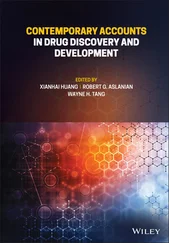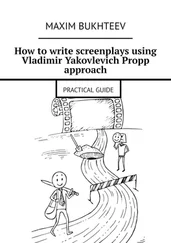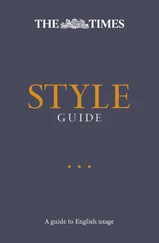Derek Offord - Using Russian - A Guide to Contemporary Usage
Здесь есть возможность читать онлайн «Derek Offord - Using Russian - A Guide to Contemporary Usage» весь текст электронной книги совершенно бесплатно (целиком полную версию без сокращений). В некоторых случаях можно слушать аудио, скачать через торрент в формате fb2 и присутствует краткое содержание. Год выпуска: 2005, Издательство: Cambridge, Жанр: Языкознание, на английском языке. Описание произведения, (предисловие) а так же отзывы посетителей доступны на портале библиотеки ЛибКат.
- Название:Using Russian : A Guide to Contemporary Usage
- Автор:
- Издательство:Cambridge
- Жанр:
- Год:2005
- ISBN:нет данных
- Рейтинг книги:4 / 5. Голосов: 1
-
Избранное:Добавить в избранное
- Отзывы:
-
Ваша оценка:
- 80
- 1
- 2
- 3
- 4
- 5
Using Russian : A Guide to Contemporary Usage: краткое содержание, описание и аннотация
Предлагаем к чтению аннотацию, описание, краткое содержание или предисловие (зависит от того, что написал сам автор книги «Using Russian : A Guide to Contemporary Usage»). Если вы не нашли необходимую информацию о книге — напишите в комментариях, мы постараемся отыскать её.
Using Russian : A Guide to Contemporary Usage — читать онлайн бесплатно полную книгу (весь текст) целиком
Ниже представлен текст книги, разбитый по страницам. Система сохранения места последней прочитанной страницы, позволяет с удобством читать онлайн бесплатно книгу «Using Russian : A Guide to Contemporary Usage», без необходимости каждый раз заново искать на чём Вы остановились. Поставьте закладку, и сможете в любой момент перейти на страницу, на которой закончили чтение.
Интервал:
Закладка:
Prepositions
333
10.1
Valency of prepositions
333
10.1.1 Prepositions followed by apparent nominative forms
333
10.1.2 Prepositions governing the accusative
334
10.1.3 Prepositions governing the genitive
337
10.1.4 Prepositions governing the dative
343
10.1.5 Prepositions governing the instrumental
345
10.1.6 Prepositions governing the prepositional or locative
346
10.2
Prepositional phrases based on nouns
350
10.3
Verbs followed by prepositions
350
10.3.1 Verbs followed by prepositions governing
the accusative
350
10.3.2 Verbs followed by prepositions governing the genitive
351
10.3.3 Verbs followed by prepositions governing the dative
352
10.3.4 Verbs followed by prepositions governing
the instrumental
352
10.3.5 Verbs followed by prepositions governing
the prepositional
353
10.4
Rendering of English prepositions in Russian
354
11
Syntax
377
11.1
Use of the cases
377
11.1.1 Use of the nominative
377
11.1.2 Use of the accusative
377
11.1.3 Use of case to denote animate direct object
378
ix
Contents
11.1.4 Basic uses of the genitive
380
11.1.5 Verbs governing the genitive
381
11.1.6 Case of direct object after a negated verb
382
11.1.7 Basic uses of the dative
384
11.1.8 Verbs governing the dative
386
11.1.9 Basic uses of the instrumental
388
11.1.10 Verbs governing the instrumental
388
11.1.11 Use of the prepositional
391
11.2
Use of pronouns
391
11.2.1 Use of кото´рый as a relative pronoun
391
11.2.2 Use of кaко´й and кото´рый as interrogative pronouns
392
11.2.3 Use of negative pronouns (никто´, etc.)
392
11.2.4 Use of нe´кого, etc.
393
11.2.5 Use of the particles -то, -нибу´дь, -ли´бо
393
11.2.6 Use of свой
394
11.3
Use of short adjectives
395
11.4
Use of numerals
398
11.4.1 Use of оди´н
398
11.4.2 Use of numerals higher than one in nominative/
accusative 398
11.4.3 Use of numerals in oblique cases
399
11.4.4 Use of numerals with animate direct object
399
11.4.5 Use of collective numerals
400
11.4.6 Approximation
401
11.4.7 Agreement of predicate with a subject containing a
cardinal numeral
401
11.4.8 Translation of years and people after numerals
402
11.4.9 Distributive expressions
402
11.4.10 Time
403
11.4.11 Dates
404
11.4.12 Distance
404
11.4.13 Nouns expressing number
405
11.5
Use of aspects
405
11.5.1 Basic distinction between the aspects
405
11.5.2 Effect of adverbial modifiers
406
11.5.3 Use of aspect in the indicative
406
11.5.4 Use of aspect in the infinitive
408
11.5.5 Use of aspect in negative constructions
409
11.5.6 Use of aspect in the imperative
410
11.6
Problems in choice of tense
411
11.7
Use of verbs of motion
412
11.8
Use of reflexive verbs
413
11.9
The conditional mood
415
11.10
The subjunctive mood
416
11.11
Use of gerunds and participles
418
11.11.1 Use of gerunds
418
11.11.2 Use of active participles
419
11.11.3 Use of present passive participles
419
x
Contents
11.11.4 Use of past passive participles
419
11.12
Conjunctions
420
11.12.1 Coordinating conjunctions
420
11.12.2 Subordinating conjunctions
422
11.12.3 Subordinating conjunctions used in R1 or R3
423
11.13
Syntactic features of colloquial speech
424
11.14
Word order
425
11.15
Punctuation
428
11.16
Use of capital letters
432
12
Stress
433
12.1
Introductory remarks
433
12.2
Stress in nouns
433
12.2.1 Masculine nouns
434
12.2.2 Feminine nouns
438
12.2.3 Neuter nouns
440
12.2.4 Irregular stress in certain prepositional singular forms
442
12.2.5 Prepositions that attract stress in certain phrases
443
12.3
Stress in adjectives
443
12.4
Stress in verbs
444
12.4.1 Stress in first-conjugation verbs
444
12.4.2 Stress in second-conjugation verbs
445
12.4.3 Stress in past-tense forms
447
12.4.4 Stress in gerunds and participles
449
12.4.5 Miscellaneous points
452
12.5
Variation in stress
452
Index of Russian words, phrases and affixes
455
General index
487
xi
Preface to the first edition
This book, like the volumes already published in the series on
contemporary usage in French, German and Spanish, is aimed at the
advanced learner who has studied the basic grammar of the language
and is now striving for a more comprehensive and sophisticated
knowledge. To this end the book includes much material on register,
vocabulary, verbal etiquette and word-formation, as well as material on the subjects of morphology, prepositions and syntax with which the
post-A-level student should already have some familiarity. The book is not conceived as a comprehensive grammar, although the main
grammatical topics that trouble the English-speaking student are quite fully covered in the later chapters. The approach adopted is not
prescriptive. That is to say an attempt is made to show the range of linguistic phenomena that might be encountered in modern Russian
and to define the limits within which they are used rather than to lay down rules for usage.
While offering, it is hoped, a multi-faceted view of the modern
language, two purposes are kept in mind throughout the book.
Firstly, it is intended to demonstrate that Russian, like any other
modern language with which the student may be familiar, is not a
stable, uniform abstraction that is applied inflexibly in all situations. As a living language spoken by millions of individuals of different ages from different backgrounds and in different situations, Russian exists in many varieties. Words, forms and constructions which are appropriate in one context may be quite out of place in another. Even apparently hard-and-fast grammatical rules may be relaxed, to the frustration of the foreign student who has laboriously mastered them. Chapter 1
therefore aims to make the student aware of the existence of variety in the Russian language, and this variety is borne in mind and examples of it indicated in all the chapters that follow.
Secondly, the book attempts to address problems that the
English-speaking student of Russian may find especially taxing.
Russian operates, of course, according to quite different grammatical principles from those to which the English-speaker is accustomed.
(One thinks in particular of its system of declension of nouns,
pronouns, adjectives, numerals and participles and of the aspectual
distinction that runs through the Russian verbal system.) Moreover, in the field of vocabulary correspondences between Russian and English
words are often limited or inexact and similarities can be misleading.
Again, in certain situations Russians simply do not express themselves in the same way as English-speakers in a similar situation, or at least a direct translation of what an English-speaker would say in that situation would seem to a Russian to some degree unnatural. Much attention is
Читать дальшеИнтервал:
Закладка:
Похожие книги на «Using Russian : A Guide to Contemporary Usage»
Представляем Вашему вниманию похожие книги на «Using Russian : A Guide to Contemporary Usage» списком для выбора. Мы отобрали схожую по названию и смыслу литературу в надежде предоставить читателям больше вариантов отыскать новые, интересные, ещё непрочитанные произведения.
Обсуждение, отзывы о книге «Using Russian : A Guide to Contemporary Usage» и просто собственные мнения читателей. Оставьте ваши комментарии, напишите, что Вы думаете о произведении, его смысле или главных героях. Укажите что конкретно понравилось, а что нет, и почему Вы так считаете.












